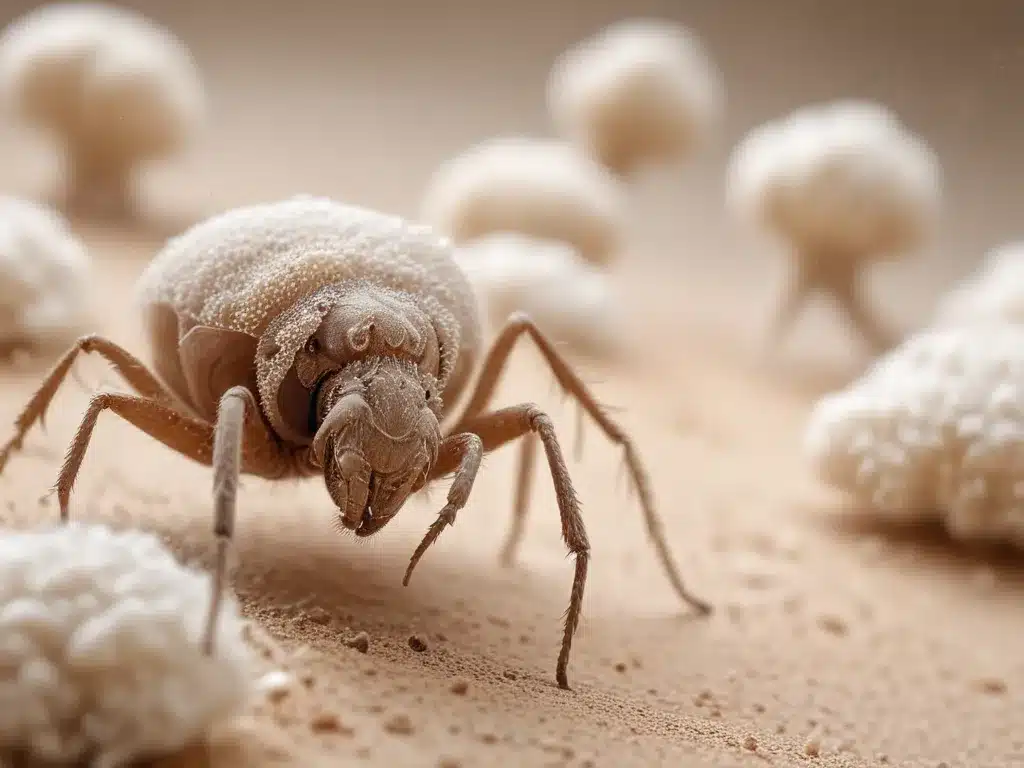Introduction
Dust mites are microscopic creatures that can cause a range of allergic reactions and respiratory issues. These tiny pests thrive in warm, humid environments and feed on dead skin cells shed by humans and pets. While they may be invisible to the naked eye, their presence can significantly impact our health and well-being. In this comprehensive guide, I aim to provide you with a deep understanding of dust mites, the allergens they produce, and effective strategies to control them within your home.
Understanding Dust Mites and Their Impact
What are Dust Mites?
Dust mites belong to the arachnid family and are closely related to spiders and ticks. These tiny creatures are only about 0.3 millimeters long, making them virtually invisible to the naked eye. Despite their small size, dust mites play a significant role in triggering allergic reactions and exacerbating respiratory conditions like asthma.
Dust Mite Allergens and Their Effects
The primary source of allergens from dust mites is their fecal matter and decomposing body fragments. These allergens can cause various allergic reactions, including:
- Runny nose
- Itchy, watery eyes
- Sneezing
- Coughing
- Wheezing
- Skin rashes or eczema
In severe cases, dust mite allergens can trigger asthma attacks and make breathing difficult for those with respiratory conditions.
Hotspots for Dust Mite Infestations
Dust mites thrive in warm, humid environments with ample food sources (dead skin cells). Common hotspots for dust mite infestations include:
- Mattresses and bedding
- Carpets and upholstered furniture
- Curtains and drapes
- Stuffed toys and plush items
Controlling dust mites in these areas is crucial for maintaining a healthy living environment.
Strategies for Controlling Dust Mites and Allergens
Reducing Humidity Levels
Dust mites thrive in humid conditions, so maintaining a relative humidity level below 50% can help inhibit their growth and reproduction. Here are some tips to reduce humidity levels in your home:
- Use dehumidifiers, especially in damp areas like basements or bathrooms.
- Ensure proper ventilation by opening windows or using exhaust fans when cooking or showering.
- Fix any leaks or moisture issues promptly to prevent dampness.
- Consider installing a whole-house dehumidifier or ventilation system for larger homes.
Frequent Cleaning and Vacuuming
Regular cleaning and vacuuming are essential for removing dust mite allergens from your living spaces. Follow these guidelines:
- Vacuum carpets, upholstered furniture, and mattresses weekly using a vacuum with a HEPA (High-Efficiency Particulate Air) filter to capture allergens effectively.
- Wash bedding, curtains, and other fabric items in hot water (at least 130°F/54°C) to kill dust mites and remove allergens.
- Use a damp cloth or mop to clean hard surfaces, as dry dusting can disperse allergens into the air.
- Consider hiring professional cleaning services, like AdamCleaning.uk, for a thorough deep cleaning of your home.
Encasements and Allergen-Proof Coverings
Encasing mattresses, pillows, and box springs in allergen-proof covers can create a barrier against dust mites and their allergens. Look for covers made of tightly woven fabric or plastic material that prevents dust mites from penetrating or escaping.
Additionally, consider replacing old carpeting with hardwood, laminate, or tile flooring, as these surfaces are easier to clean and less hospitable to dust mites.
Air Purifiers and HEPA Filters
Air purifiers equipped with HEPA filters can effectively remove airborne dust mite allergens from your indoor environment. Place these purifiers in rooms where you spend the most time, such as bedrooms and living areas.
Additionally, replace HVAC (Heating, Ventilation, and Air Conditioning) filters regularly with high-quality HEPA filters to prevent the recirculation of allergens throughout your home.
Controlling Humidity in Specific Areas
While maintaining whole-house humidity levels is essential, some areas may require additional attention. For example, consider using a dehumidifier or exhaust fan in bathrooms and laundry rooms to prevent excessive moisture buildup.
Additionally, keep indoor plants to a minimum, as overwatering can contribute to increased humidity levels and create an ideal environment for dust mites.
Professional Cleaning and Pest Control Services
For severe dust mite infestations or persistent allergic reactions, consider seeking professional cleaning and pest control services. Companies like AdamCleaning.uk specialize in deep cleaning techniques and can provide expert guidance on controlling dust mites and allergens in your home.
Pest control professionals may also offer specialized treatments and recommendations for managing dust mite populations effectively.
Conclusion
Controlling dust mites and allergens requires a multi-faceted approach that addresses humidity levels, cleaning routines, and environmental modifications. By implementing the strategies outlined in this guide, you can create a healthier, dust-free home environment that minimizes allergic reactions and respiratory issues.
Remember, consistency is key when it comes to managing dust mites. Regular cleaning, monitoring humidity levels, and seeking professional assistance when needed can go a long way in ensuring your home remains a safe and comfortable haven for you and your loved ones.







